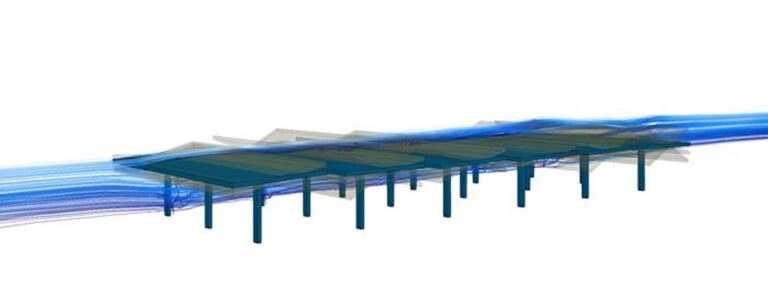Researchers in France have proposed a numerical decision-making framework to determine the optimization of the tilt angle of solar panels in extreme wind conditions. They say the framework challenges traditional engineering practices and provides a scalable solution for increasing resilience in the real world.
Researchers from the Center for Material Forming at PLS University in Sophia Antipolis, Francehave proposed a numerical decision-making framework for protecting solar panels against extreme weather conditions.
The research paper “Combining machine learning and computational fluid dynamics to optimize the tilt angle of solar panels in extreme wind conditions”, available in the magazine Physics of fluids, says there is currently no best practice for storing solar panels under strong wind conditions.
Traditional methods of protecting solar panels from high winds often involve moving panels into a presumed safe storage position parallel to the ground once a certain wind speed is reached. Although this has proven effective in some cases, the panels in this position lose energy output and are often not protected against the highest wind speeds.
The team’s new framework is designed to recommend a storage position that takes advantage of the increasing use of solar tracker actuators and allows panels to set an optimal angle to the sun to continue maximizing power output.
The framework combines advanced wind simulations with machine learning to optimize the angles of individual solar panels in high winds. “By combining advanced fluid dynamics and artificial intelligence, we saw an opportunity to innovatively address the risks of wind damage and contribute to the resilience of sustainable energy systems,” said Elie Hachem, author of the report.
Unlike previous methods developed for panel protection, the new framework treats panels as independent decision makers and identifies data-driven solutions to reduce stress and outperform current security measures. “It’s like teaching the panels to dance with the wind, minimizing damage and protecting energy production during high wind speeds,” Hachem added.
The research team conducted a series of experiments to test their framework for various possible causes of fracture, including cracking, vibration and fatigue.
They found that their proposed approach minimizes aerodynamic efforts on two-dimensional and three-dimensional arrangements of six ground-mounted panels at an incident wind speed of 50 km/h. It was also found to outperform the basic safety practices discussed in the literature in the research paper by several tens of percent.
“This gives hope that a deep learning agent, by interacting with its computational fluid dynamics environment in an experimental manner, can learn unexpected solutions to this complex decision-making problem and come up with innovative, feasible solutions capable of managing the problems. utility-scale solar energy during heavy wind events, while efficiently complementing technical intuition and practical experience,” say the researchers.
They add that the framework challenges traditional engineering practices and provides a scalable solution for increasing resilience in the real world.
This content is copyrighted and may not be reused. If you would like to collaborate with us and reuse some of our content, please contact: editors@pv-magazine.com.


